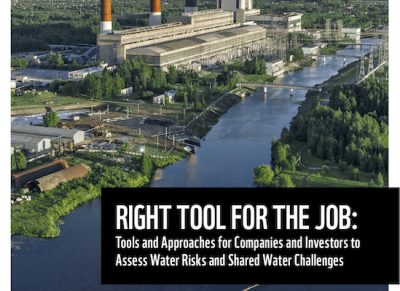Primary Functions
- Find recommendations for conducting robust water risk assessment and understanding shared challenges.
- Find guidance on the three leading water tools available for corporate water risk assessment in relation to a user’s needs and priorities.
Detailed Description
Over the past decade, various tools have emerged to help companies and financial institutions understand and respond to water challenges and risks. While the proliferation of these tools has helped in many ways, it has also created confusion amongst users around both the concept of water risk assessment and the differences/similarities between the tools themselves. This report seeks to shed light on the matter and provide clear guidance to users.
This report outlines the following key concepts:
- Shared water challenge and basin water risk are related, but separate concepts with the latter involving an interpretation derived from/based on the former.
- Water risk assessment involves both basin and operational (or company) risk. The nature of both the basin conditions and the business matters considerably in driving risk exposure.
- Water is spatially and temporally dynamic. Accordingly, it is critical to understand both the spatial and the temporal dimensions of water challenges and water risks at different spatial levels and under different timeframes.
- Water risk exposure and response are important to understand in order to evaluate residual water risk. Having only one of these paints an incomplete picture of the overall situation.
- Recognizing that water impacts different parts of the value chain differentially, it is critical to first determine and clarify the geographic and value chain scope before running any assessment.
The report then provides a detailed overview of the latest development of three leading water tools to help users understand their similarities and differences, especially with respect to their unique functionalities.





